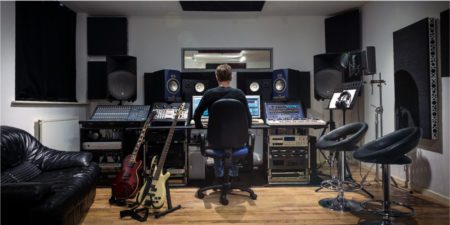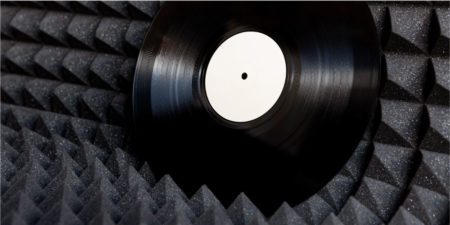Creating the Ultimate Home Cinema Experience with Acoustic Panels
Home cinema setups offer an unparalleled way to immerse yourself in movies, shows, and entertainment within the cozy confines of your own home. As families come together for cinematic adventures and individuals seek a premium viewing experience, the value of a well-crafted home cinema cannot be overstated. While attention is often directed towards components like the projection system, seating, and speakers, there’s a critical factor that can significantly impact your audio quality – the acoustics of the room.
Enhancing Home Cinema Audio with Acoustic Panels
Unveiling the Crucial Role of Acoustic Panels
When curating a home cinema lounge, many enthusiasts prioritize the quality of their speakers. While a top-notch surround sound system is undeniably vital, it’s crucial to recognize that excessive sound can lead to undesirable outcomes. Especially in the context of compact home cinema lounges, sound waves tend to bounce around, creating echoes and reverberations that compromise sound clarity.
Enter acoustic foam panels – the unsung heroes of home cinema setups. Crafted from materials like wool or foam, these sound-absorbing panels play a pivotal role in mitigating echoes and reducing sound wave rebounds throughout your space.
Understanding Acoustic Panels: Their Mechanism and Benefits:
Exploring the Science Behind Acoustic Panels
Acoustic panels operate by absorbing specific sound waves and curbing the echoing and reverberation that they generate. These panels are strategically positioned across the room to effectively control the trajectory of sound waves. The ultimate objective? Achieving the optimal Reverberation Time (RT) for your space.
The required RT can vary based on the purpose of the room. For instance, areas demanding near-complete silence, such as a library, necessitate more panels. In a home cinema lounge, controlled sound rather than complete absorption is preferred.
The efficacy of acoustic panels is quantified by their Noise Reduction Coefficient (NRC) rating, representing the percentage of sound absorbed. An NRC rating of 0.70 denotes that a panel absorbs 70% of sound while reflecting the remaining 30% back into the room. Generally, thicker panels boast higher NRC ratings.
Balancing Sound Absorption and Diffusion for Optimal Audio:
Striking the Perfect Audio Balance
Acoustic panels not only absorb sound but also play a crucial role in sound diffusion. Achieving the ideal equilibrium between absorption and diffusion is vital to create an immersive listening experience. Over-absorption can lead to a lifeless atmosphere, whereas diffusion contributes to a natural, surround sound ambience, particularly in compact home cinema lounges.
Acoustic Panels vs. Bass Traps: A Comprehensive Comparison:
Choosing the Right Panels for Diverse Sound Frequencies
While acoustic panels target mid-range and high-frequency sounds, another indispensable component comes into play when addressing low-frequency nuisances: bass traps. These traps excel in muffling deep, low sounds like bass drums or thunder, often found in horror and thriller films.
A harmonious blend of both acoustic panels and bass traps is pivotal for achieving comprehensive acoustics in your home cinema lounge.
Strategically Placing Acoustic Panels for Optimal Sound:
Mastering Precise Panel Placement
The placement of acoustic panels is an art that significantly influences sound absorption quality. Identifying key reflection points and thoughtfully positioning panels can greatly enhance your home cinema lounge’s audio quality.
Begin by pinpointing the primary reflection point – where sound waves first encounter surfaces after emanating from the speakers. Eliminating this reflection point ensures a crisp, clear sound. A simple mirror test can help identify reflection points on walls, guiding the effective placement of panels.
Determining the Right Number of Acoustic Panels: A Personalised Approach:
Customizing Your Acoustic Solution
The number of acoustic panels needed isn’t a one-size-fits-all formula. Factors such as room shape, speaker potency, and material composition all influence panel requirements. Square or L-shaped home cinema lounges, concrete walls, and additional hard surfaces necessitate more panels for optimal sound control.
Strategically Placing Acoustic Panels: Your Roadmap to Acoustic Excellence:
Expert Tips for Precise Panel Placement
- Sidewall Panels: These panels significantly impact sound quality, as they target primary reflection points. Utilize panels with higher NRCs for maximum effect. If side walls feature windows, consider fabric curtains to further control reflection.
- Front Wall Panels: Place two acoustic panels on either side of the screen or projection system, facing the back of the room. If your screen is perforated, panels behind it can help minimize additional reflection points.
- Rear Wall Panels: Opt for diffusion panels on rear walls, dispersing sound waves to add vibrancy to your audio experience.
- Ceiling Panels: Ceiling panels may be unnecessary unless the flooring features hard, reflective surfaces such as cement or hardwood. In such cases, carpets or rugs on reflection points can alleviate the need for ceiling panels.
Conclusion: Elevate Your Home Cinema Experience with Acoustic Panels:
Unlock the Full Potential of Your Home Cinema
In an era where streaming reigns supreme, a home cinema system is a coveted asset. The aftermath of the COVID-19 pandemic has reshaped entertainment preferences, making the allure of a home cinema lounge even more appealing. By harnessing the power of acoustic panels, you open doors to unlocking the true potential of your home cinema experience. From absorbing sound to diffusing it for an immersive surround sound atmosphere, these panels catalyze the transformation of your home cinema lounge into a cinematic haven. Whether you’re a cinephile or simply seeking premium entertainment, let acoustic panels redefine your audio journey and elevate your home cinema to unparalleled heights.
Frequently Asked Questions
What do movie theatres use for soundproofing?
Movie theatres employ a combination of specialized soundproofing materials and techniques to create an immersive cinematic experience. Commonly, movie theatres use materials like mass-loaded vinyl (MLV), acoustic insulation, and resilient channels to reduce sound transmission between theatres and neighbouring spaces. Additionally, hanging heavy curtains from curtain poles, acoustic baffles, and bass traps help absorb and control sound within the theatre, minimizing echoes and improving overall audio quality. The careful integration of these soundproofing elements ensures that moviegoers enjoy an optimal auditory experience without disturbances from external noise.
What is the best material for home theatre walls?
When it comes to choosing materials for home theatre walls, density and sound-absorption qualities are key factors. Many home theatre enthusiasts opt for materials like medium-density fiberboard (MDF) due to its dense composition that helps minimize sound transmission. Additionally, gypsum drywall with soundproofing additives is a popular choice as it effectively dampens sound vibrations. For optimal results, combining these materials with acoustic insulation and installing resilient channels can further enhance sound isolation. Ultimately, the best choice depends on the specific requirements of your home theatre setup and your desired level of soundproofing.
Is acoustic foam good for a home theatre?
Acoustic foam is often used to improve sound quality within a home theatre by reducing echoes and reverberations. It is effective for absorbing mid to high-frequency sound waves, resulting in clearer audio and enhanced speech intelligibility. However, it’s important to note that acoustic foam primarily addresses sound reflections within the room and may not provide complete soundproofing from external noise. For comprehensive sound management, consider a combination of acoustic foam, bass traps, and other soundproofing materials tailored to your home theatre’s acoustical needs.
Are acoustic panels worth it for a home theatre?
Acoustic panels can significantly enhance the audio experience in a home theatre by minimizing echoes and improving sound clarity. They are particularly beneficial for controlling mid to high-frequency sound waves, creating a more immersive and enjoyable atmosphere. Acoustic panels also contribute to a well-balanced audio environment, ensuring that dialogue is clear and details are distinct. While acoustic panels may not provide complete soundproofing, their ability to optimize sound quality makes them a worthwhile investment for anyone seeking to create a premium home theatre experience.





